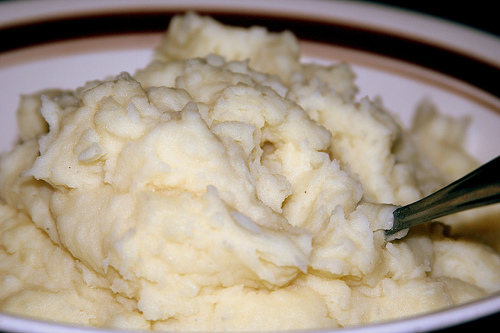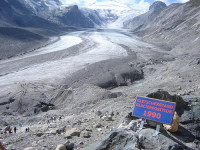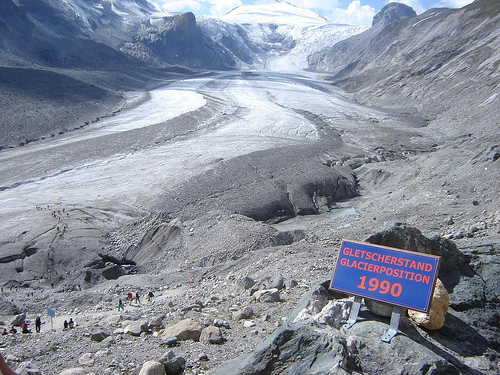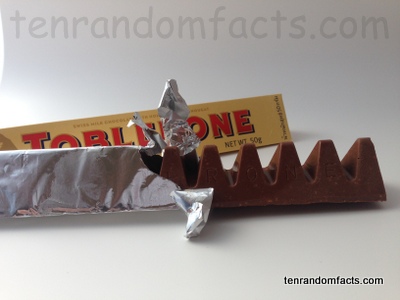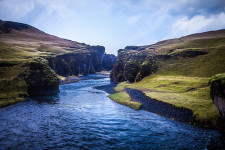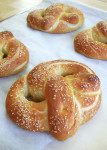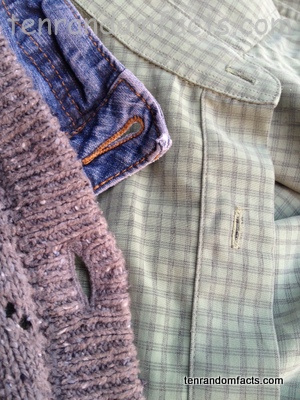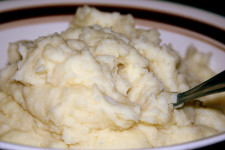
Step on a potato? Turn it into mashed potato!
- Mashed potato is an edible dish primarily made of cooked potato that has been crushed to a soft and somewhat smooth consistency.
- Mashed potato’s main ingredient is potato, while additional ingredients often include butter, milk, vegetable oil or cream, as well as flavourings such as spices or herbs.
- Commonly, mashed potato is served as a side accompaniment with meat or vegetables, and often gravy, although it may be used as an ingredient in dishes such as cottage pie.
- The earliest known mashed potato recipe published was in The Art of Cookery recipe book authored by Englishwoman Hannah Glasse, in 1747.
- Mashed potato is typically made with the use of a masher (powered by hand) or a mixer (electric), and modern style masher designs have been available from the mid to late 19th century.
Mashed Potato
Image courtesy of David K/Flickr
- Mashed potato can become sticky and somewhat unpleasant if excessively mashed, particularly while using electrical mixers, due to the starch being released because of over-stimulation.
- Various potatoes can be used to make mashed potato, while some prefer waxy ones, while others prefer to use dry floury potatoes, and the typical texture of the potato once mashed with added ingredients is soft and starchy, and somewhat creamy.
- It is thought that mashed potato dates back to the 1600s in England, though it is likely that potatoes were first mashed thousands of years ago by the Incas in South America, where potatoes originated.
- Mashed potato can vary across cultures, with Indian mashes preferring an abundance of flavour with many ingredients, while a French preparation differs somewhat and includes the yolk of an egg.
- Mashed potato is commercially available in a dehydrated or frozen form, and an ‘instant’ dehydrated flaked version has been available since the 1960s.
Bibliography:
Bulls D, History of the Potato Masher & How to Make Mashed Potatoes, 2015, Kings River Life Magazine, http://kingsriverlife.com/10/09/history-of-the-potatoe-masher/
FAQs: Charlotte to Millet, 2015, Food Timeline, http://www.foodtimeline.org/foodfaq1.html
Mashed Potato, 2015, Wikipedia, https://en.wikipedia.org/wiki/Mashed_potato




